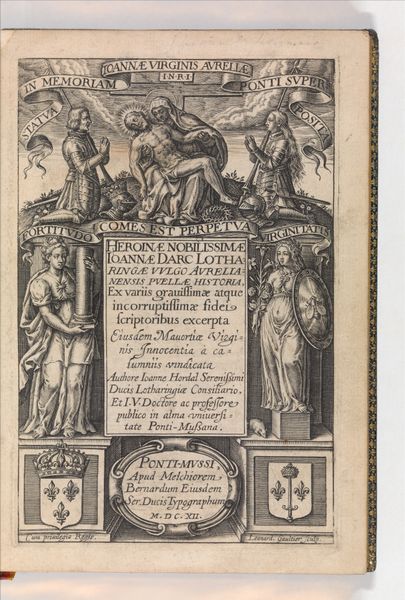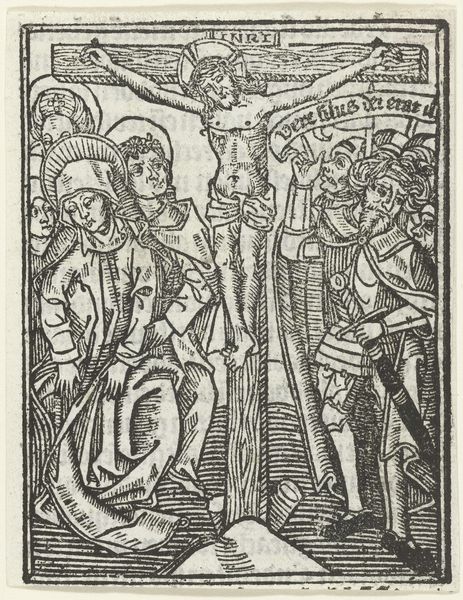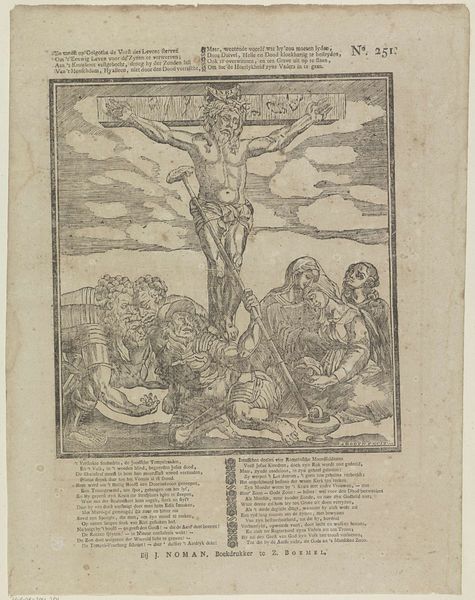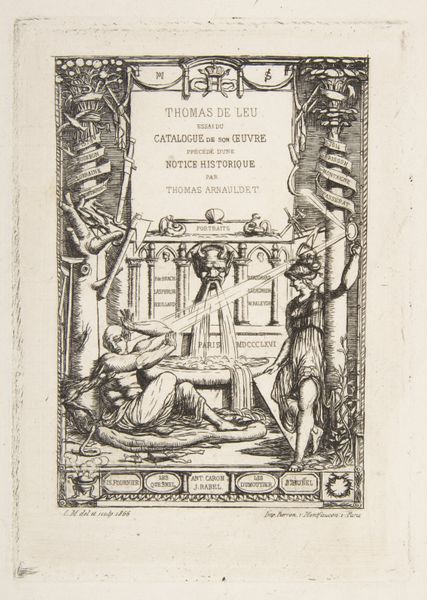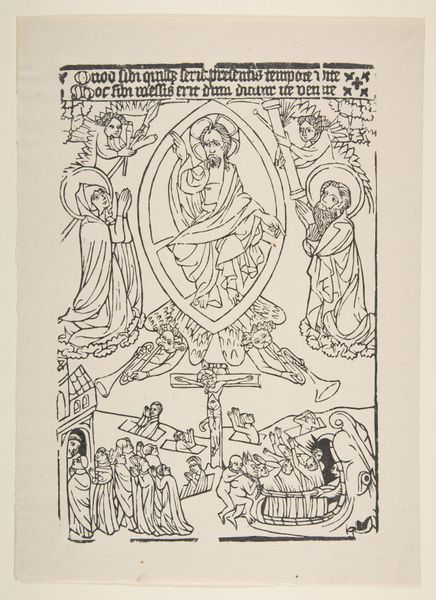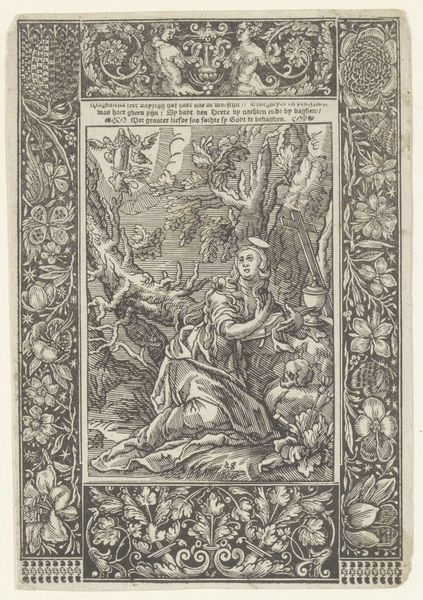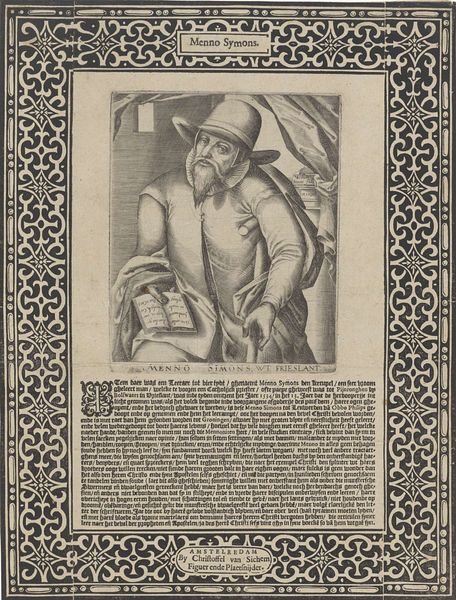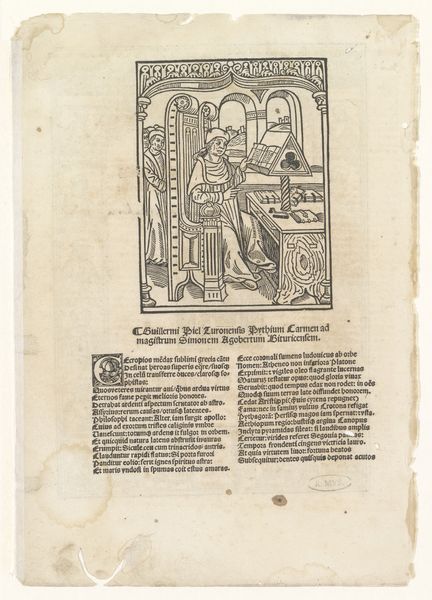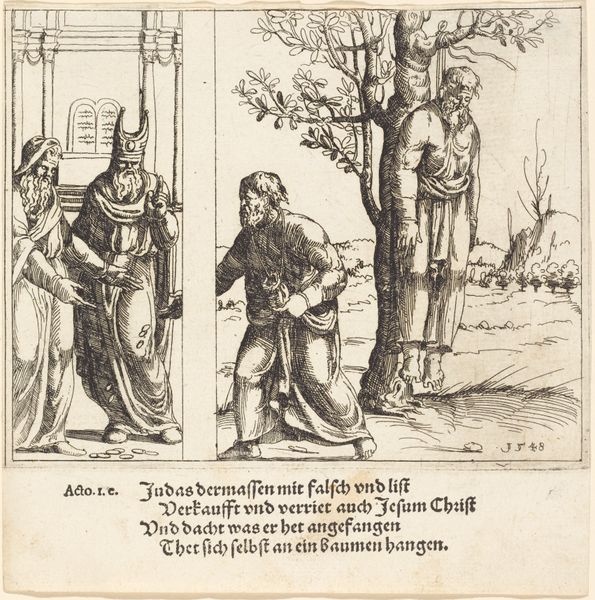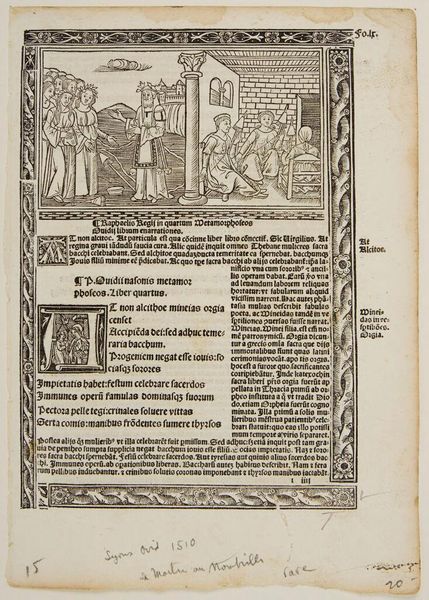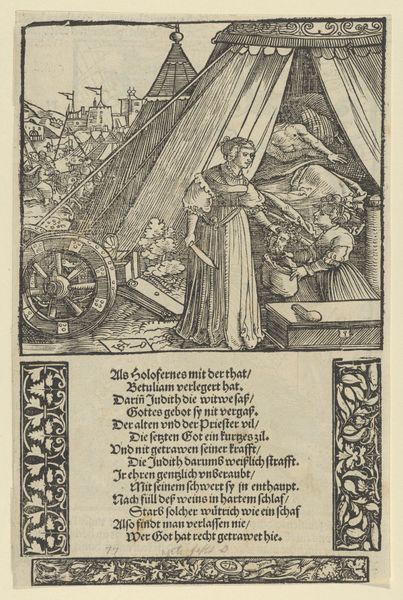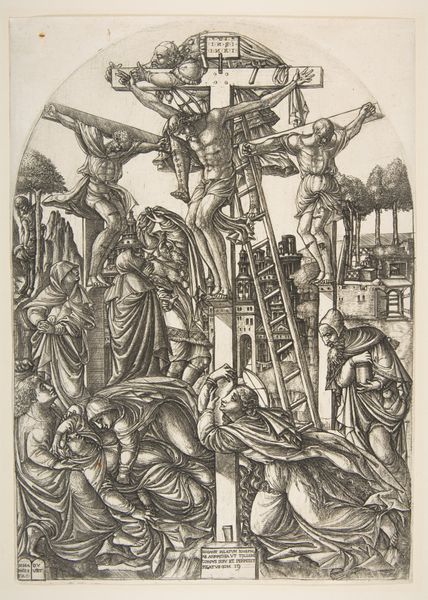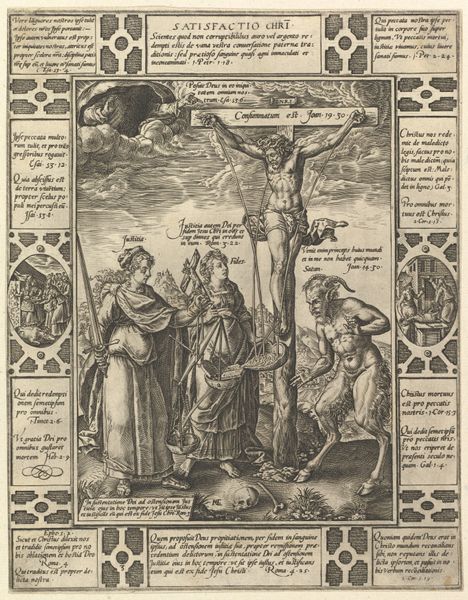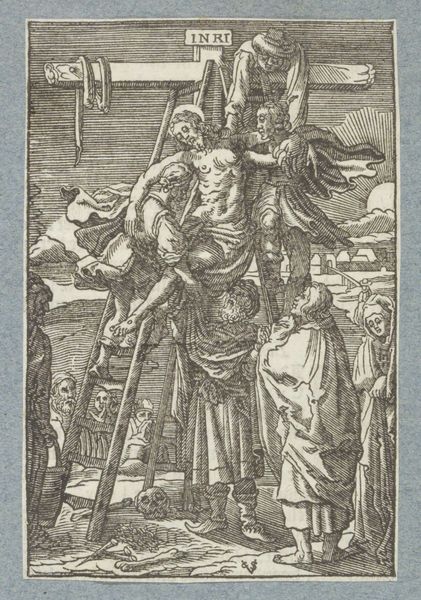
Dimensions: height 447 mm, width 363 mm
Copyright: Rijks Museum: Open Domain
Curator: So, this print, "Ghebedt des Avonts / Oeffeninghen des Morgens," possibly from between 1700 and 1865, and located at the Rijksmuseum, is attributed to van der Haeghen. It's a striking image, isn’t it? What are your initial thoughts? Editor: It's quite detailed. The stark contrast of the black lines on the paper creates a dramatic, almost somber mood. There's so much going on, from the crucifixion scene to the skulls and the kneeling figure. How do you approach a work like this? Curator: I am drawn to the materials themselves and the means of production. It is a print; likely a woodcut or engraving. Considering its date, between 1700-1865, think about who would have been producing prints like this and for what purpose? Was this a widely distributed devotional image for the masses or something else? Editor: I suppose the fact that it *is* a print means it was meant to be reproduced...but that date range is pretty wide! The use of Latin suggests a specific, perhaps more educated, audience at the time. Curator: Exactly! Consider also the socio-economic context of printmaking during this period. Who controlled the means of production? Who had access to this imagery, and how did its materiality—the ink, the paper, the very act of repetitive printing—shape its message? Does this mass production cheapen the religious element? Editor: That's a fascinating way to think about it – the actual labor and materials affecting its interpretation! I'm so used to thinking about subject matter that I had forgotten about the consumption aspect of its making. I guess I see the vanitas theme differently now. Curator: Indeed. The materials, labor, and mode of dissemination are inseparable from the religious or allegorical content the print tries to express, aren't they? Editor: This approach provides a new layer of understanding that goes beyond just identifying symbols and narratives. Curator: Precisely! Material analysis reveals as much about the image's cultural and historical significance as any iconographic reading could.
Comments
No comments
Be the first to comment and join the conversation on the ultimate creative platform.
